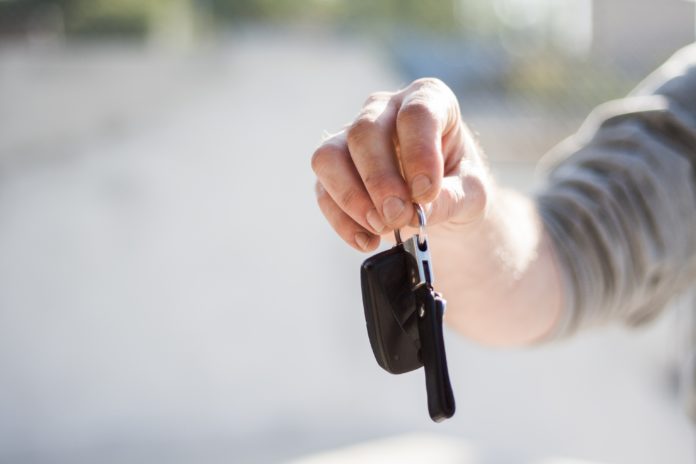
By Tracey Schelmetic
What Will “Risk Averse” Vehicle Shopping Look Like?
In the earliest days of COVID-19, we hoped it was a temporary blip: a wildfire that would quickly burn itself out. Increasingly, health experts are warning that SARS-CoV-2 may be here to stay, even with the development of an effective vaccine. In reality, it may be years before retail shopping returns to pre-COVID-19 practices. Most people will continue to practice extreme caution, and sales organizations need to adapt to customer expectations.
The new reality involves social distancing, masks, disease testing and as few in-person visits to retail outlets as possible. In some cases – think public transport, airplanes, bars, concerts and more – the correct amount of physical distancing required is virtually impossible to achieve. These industries are left wondering if it will ever be safe to open again, and if they’ll have any customers left when they do.
Dealerships are in a better position than most to interact with a virus-wary public. Some of the sales process happens in outdoor lots (experts agree outdoors is safer than indoors) and crowding in indoor facilities can be easily contained with careful appointment setting. The key to thriving in a COVID-19 world will be to anticipate and meet the needs of the newly risk-averse shopping public.
The Acceleration of Digital Processes
In a recent Dealer News Today podcast, founder Dave Cantin spoke with former Bentley Motors and Volkswagen of America COO Mark Barnes, who noted that effective leadership is more critical than ever for dealers, and sales organizations need to add much more digital technology to the mix.
“We’ve done a lot with digital in the last few years, but I think it’s going to get even more intense,” said Barnes. “It’s not the only way we’re going to sell cars in the future, but it will increase in popularity, I believe. I think the [key] aspect is making sure you’ve got a full sale available online. It’s going to get into the titling of vehicles and credit applications: things that are certainly available, but a lot of dealers aren’t accustomed to doing it that way.”
Certainly, most customers will want to touch the dealership in person at least once in the sales process, but dealers should be consulting their technology partners to virtualize as many processes as possible. For in-person visits, dealers should take cues from their state health agencies or the CDC for best practices to reduce the chances of spreading the virus between employees and dealership visitors. These practices might include:
Solo test drives. While many dealers are reluctant to allow solo test drives, some flexibility will be required in the months (years?) to come. The interior of a car is an ideal incubation zone for a virus that’s carried in exhaled droplets, so sales personnel will need to forego getting into the vehicle with the shopper. This may require dealers to adjust their insurance practices and institute better security procedures to protect vehicles.
Appointment only. The days of allowing anyone to stroll into the dealership are on hiatus. Appointment setting to minimize the number of individuals in the physical premises is critical, and dealerships should ensure that high-touch surfaces are cleaned between appointments.
Masks. While there are a variety of opinions on the use of masks, most health experts agree that when all parties wear a mask, risks of transmission of the virus in droplet form drop significantly. One study found that mask wearing by all parties reduces the chance of transmission by 80 percent.
The Effects May Be Regional
Attitudes toward risk in daily life activities may vary quite a bit by geographic region. In a paper submitted to the Center for Research in Economics, Management and the Arts (CREMA), researchers found that individuals modified their shopping behavior depending on the size and shape of the risk pool.
“Regions with higher risk aversion report a larger relative reduction in frequency of visits to places such as retail shops, grocery stores, parks, and public transport during the weekends compared to weekdays, whereas risk-loving regions are more likely to go to workplaces and less likely to stay at home during the weekends,” wrote the paper’s authors.
Essentially, what works for a dealership in Montana isn’t going to work in a dealership in Queens, New York. Dealers will be left to determine their own best practices.
Look for the Opportunities
An important takeaway is that while there are hardships to overcome, there are also opportunities. Fewer in-person visits by shoppers may enable dealers to shrink their floorplans and devote the resources they would have spent on physical space to digital initiatives and marketing. Additionally, consumer hesitance to use public transportation and ridesharing services such as Uber or Lyft is likely to lead to a boom in vehicle buying. Bankruptcies by large car rental companies are likely to lead to high availability of used vehicles. Whatever comes, dealers are in a good position to reap rewards from new circumstances.
“Car dealers are the best I’ve ever seen at adapting,” said Barnes. “They have a tremendous amount of resiliency, and they figure out which way to go quickly. They’re the last great entrepreneurs in the United States, in my humble opinion. “












